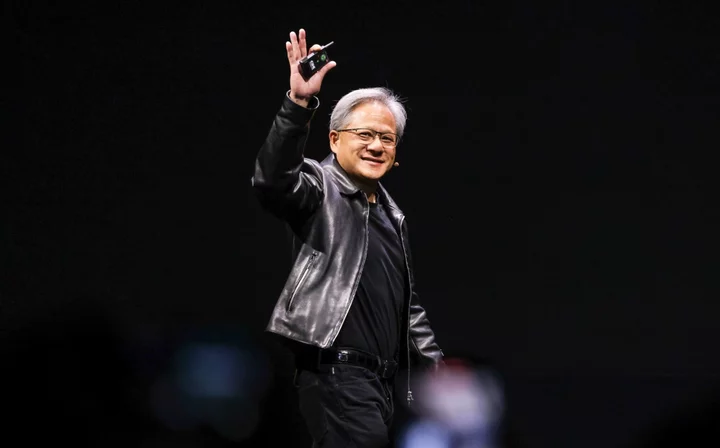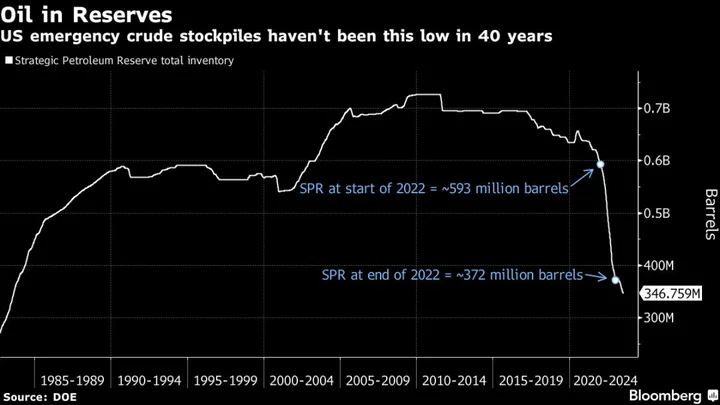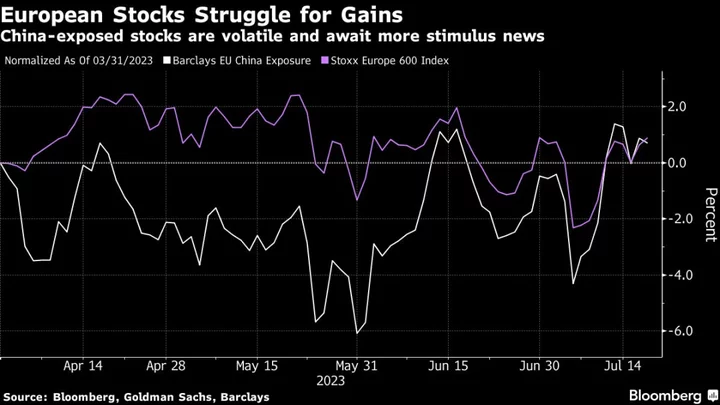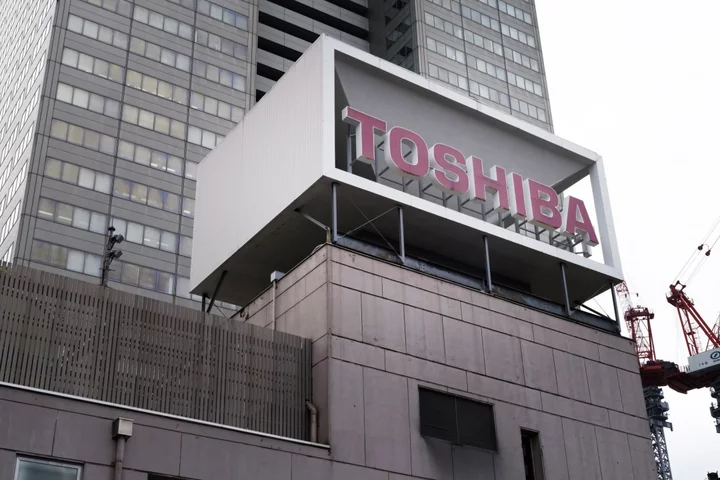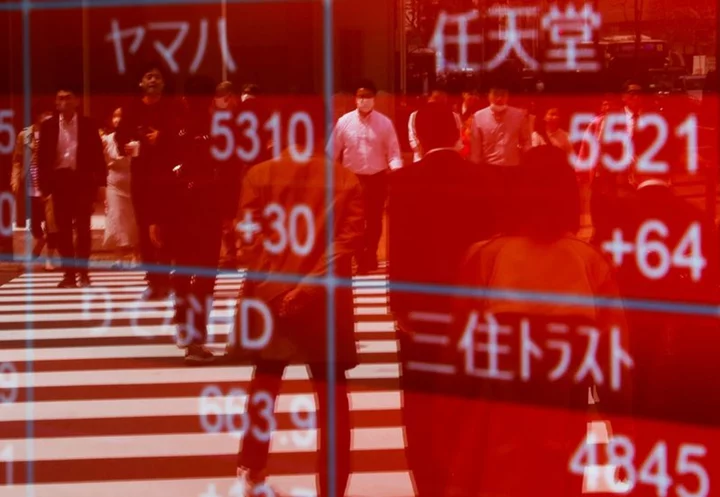When Asia’s biggest computing and electronics show kicked off this week, one name was conspicuously absent: Intel Corp.
The US chipmaker does not have an official presence at this year’s Computex exhibition, an event it once dominated through keynote speeches and an outsized footprint on the show floor. The 2023 edition opened instead with a marathon two-hour showcase by Nvidia Corp. Chief Executive Officer Jensen Huang, a day before it became the first $1 trillion chipmaker in anticipation of a wave of demand for its artificial intelligence processors.
Intel, long synonymous with the fastest processors in the world, has seen its all-purpose chips overshadowed by Nvidia’s more specialized, parallel-processing architecture that’s superior at speeding up AI workloads. Intel rivals that hosted the other big keynote events included Qualcomm Inc., MediaTek Inc. and Arm Ltd. CEO Rene Haas — a former Nvidia executive — all of which talked up their AI credentials.
Nvidia cast a long shadow across the exhibition floor. Super Micro Computer Inc. showed off data center racks with multiple Nvidia H100 accelerators, Asustek Computer Inc. is readying a subscription-based generative AI service built around Nvidia’s A100 chips, and Quanta Computer Inc. is touting new servers that support the Nvidia Grace Hopper superchip. In contrast, Intel’s presence was far diminished from previous years. The lifeblood of the Computex show are the smaller device assemblers and system integrators, companies that a decade earlier would likely have revolved around Intel.
For this year at least, Intel opted to retreat from the Computex spotlight and conduct its business behind the scenes. CEO Pat Gelsinger hosted an invitation-only Intel Vision event in Taipei last week. The company is also supporting partners like Asus at their Computex booths. Its most public appearance will be an executive joining a sustainability forum.
Santa Clara, California-based Intel, whose headquarters are only a brief walk away from Nvidia’s and those of rival chipmaker Advanced Micro Devices Inc., is in a transitional period under Gelsinger’s leadership. The company recently launched its first graphics cards and is working to make up lost ground on the AI front and advanced chip fabrication.
Nvidia’s Huang may become a customer of Intel’s in the future. Asked about diversifying his company’s supply chain beyond main partner Taiwan Semiconductor Manufacturing Co., the executive on Tuesday said his company is evaluating Intel’s next-gen chipmaking processes and they looked promising.

